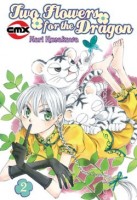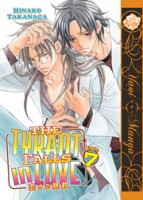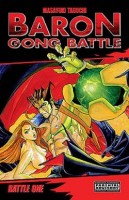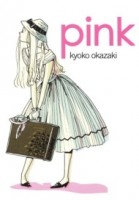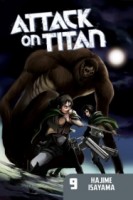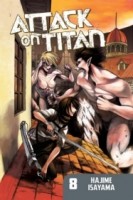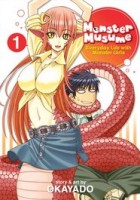My News and Reviews
Last week was another week with two reviews here at Experiments in Manga. The first review was of Fumi Yoshinaga’s What Did You Eat Yesterday?, Volume 1, one of the manga I was most looking forward to being released this year. I really enjoyed the debut of the series and look forward to reading more. The second review posted last week was of Jen Lee Quick’s Off*Beat, Volume 2. The third volume in the series will be released soon, so I decided to revisit the previous volume in preparation. Off*Beat is a comic that simply makes me happy and I think I enjoy it more with each rereading.
And now for some interesting found online: Jason Stroman wraps up his manga advice series at Organization Anti-Social Geniuses with 20 Things I Learned from the Manga Advice Series. Joe McCulloch takes a close look at some of the pre-Tezuka manga available in English at The Comics Journal. No Flying No Tights has updated its list of must have manga for teens. A recent poll of Japanese parents asked “Which manga do you want your kids to read?” RocketNews24 lists the top ten, eight of which are currently available in English either digitally or in print.
Quick Takes
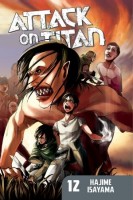 Attack on Titan, Volume 12 by Hajime Isayama. The English-language release of Attack on Titan has now more or less caught up with the Japanese release of the series, which means the time between volumes has increased. Granted, those who are impatient have option of reading the most recent chapters on Crunchyroll, but I’ve personally been waiting since January to see what happens next. I am still impressed by just how many twists and turns Isayama is able to incorporate into the plot of Attack on Titan. Even though the twelfth volume is more about the action than it is about the story, there are still some surprises in store. Granted, each revelation in Attack on Titan only seems to raise more questions. In this volume the Survey Corp is tasked with rescuing Eren, who is in bad shape and being held captive along with Ymir by Reiner and Bertolt. Facing off against Titans is one thing, but having to attack those who at one point seemed to be allies is another thing entirely. Attack on Titan has always been intense and the twelfth volume is no different.
Attack on Titan, Volume 12 by Hajime Isayama. The English-language release of Attack on Titan has now more or less caught up with the Japanese release of the series, which means the time between volumes has increased. Granted, those who are impatient have option of reading the most recent chapters on Crunchyroll, but I’ve personally been waiting since January to see what happens next. I am still impressed by just how many twists and turns Isayama is able to incorporate into the plot of Attack on Titan. Even though the twelfth volume is more about the action than it is about the story, there are still some surprises in store. Granted, each revelation in Attack on Titan only seems to raise more questions. In this volume the Survey Corp is tasked with rescuing Eren, who is in bad shape and being held captive along with Ymir by Reiner and Bertolt. Facing off against Titans is one thing, but having to attack those who at one point seemed to be allies is another thing entirely. Attack on Titan has always been intense and the twelfth volume is no different.
 Border, Volumes 1-3 by Kazuma Kodaka. Although Border is an ongoing series at five volumes and counting, only three of those volumes have so far been released in English. I’m not sure if Digital Manga plans on licensing more at this point or not. Border is the most recent of Kodaka’s boys’ love manga to be translated. Though calling it boys’ love might be a bit misleading. The manga’s lead, Yamato, is gay and all of the characters seem to be in love with him to one extent or another, but so far the series seems to be more about detective agency he runs with his two foster brothers and his cousin than it is about romance. The first volume, which focuses on ex-soldier Yamato and his tragic past, is the most boys’ love-like (including explicit sex scenes), but subsequent volumes turn to the other characters—his brothers Kippei, a computer genius, and Tamaki, a hair designer whose skills are handy when disguises are needed. Their backstories are likewise tragic. I like this narrative structure of Border. And if the pattern continues, the next volume in the series should focus on Yamato’s cousin Sogo, which I would be very interested in reading.
Border, Volumes 1-3 by Kazuma Kodaka. Although Border is an ongoing series at five volumes and counting, only three of those volumes have so far been released in English. I’m not sure if Digital Manga plans on licensing more at this point or not. Border is the most recent of Kodaka’s boys’ love manga to be translated. Though calling it boys’ love might be a bit misleading. The manga’s lead, Yamato, is gay and all of the characters seem to be in love with him to one extent or another, but so far the series seems to be more about detective agency he runs with his two foster brothers and his cousin than it is about romance. The first volume, which focuses on ex-soldier Yamato and his tragic past, is the most boys’ love-like (including explicit sex scenes), but subsequent volumes turn to the other characters—his brothers Kippei, a computer genius, and Tamaki, a hair designer whose skills are handy when disguises are needed. Their backstories are likewise tragic. I like this narrative structure of Border. And if the pattern continues, the next volume in the series should focus on Yamato’s cousin Sogo, which I would be very interested in reading.
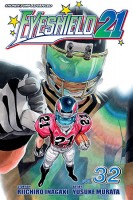 Eyeshield 21, Volumes 32-34 written by Riichiro Inagaki and illustrated by Yusuke Murata. Often I find that reading sports manga makes me at least temporarily more interested in the games which they’re about, but for whatever reason that hasn’t been the case for Eyeshield 21. I probably have developed more of an appreciation for American football, but it still isn’t a sport I care very much about. Eyeshield 21 on the other hand, I’ve come to love. The artwork is phenomenal and the characters are engaging and distinctive. At this point, much of the humor and many of the running gags from the start of the series have faded into the background; Eyeshield 21 has become much more serious and dramatic, but it’s still a tremendous amount of fun. The series has been building up to the Christmas Bowl where the Deimon Devil Bats are playing against the Teikoku Alexanders, an all-star team which has never lost the tournament. The games in Eyeshield 21 have always been exciting but the Christmas Bowl match is fantastic. I fully anticipated Eyeshield 21 to end with the Christmas Bowl, but no, there are still three more volumes to go!
Eyeshield 21, Volumes 32-34 written by Riichiro Inagaki and illustrated by Yusuke Murata. Often I find that reading sports manga makes me at least temporarily more interested in the games which they’re about, but for whatever reason that hasn’t been the case for Eyeshield 21. I probably have developed more of an appreciation for American football, but it still isn’t a sport I care very much about. Eyeshield 21 on the other hand, I’ve come to love. The artwork is phenomenal and the characters are engaging and distinctive. At this point, much of the humor and many of the running gags from the start of the series have faded into the background; Eyeshield 21 has become much more serious and dramatic, but it’s still a tremendous amount of fun. The series has been building up to the Christmas Bowl where the Deimon Devil Bats are playing against the Teikoku Alexanders, an all-star team which has never lost the tournament. The games in Eyeshield 21 have always been exciting but the Christmas Bowl match is fantastic. I fully anticipated Eyeshield 21 to end with the Christmas Bowl, but no, there are still three more volumes to go!
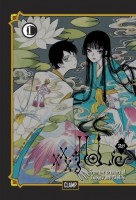 xxxHolic: Rei, Volume 1 by CLAMP. It’s been a while since I’ve read any of the original xxxHolic manga, and I never did finish reading the series before it went out of print (happily, Kodansha will be re-releasing the series in an omnibus edition), but I was still happy to see Rei licensed. As indicated in the translation notes, rei in this instance means return, “signaling a return to the series and to its roots.” It’s not really clear yet exactly how, or if, Rei will tie into the main series. I do have a few ideas how it might, though. Those who have read at least some of xxxHolic will be at a slight advantage over those who haven’t since the characters aren’t thoroughly introduced, but even new readers should be able to make sense of most of Rei. I love Clamp’s artwork in this series. The high-contrast and relatively simple illustration style is very evocative and elegant, and creepy and disconcerting when required. The supernatural elements in the manga tend to be dark in tone, but at the same time the main characters and their interactions tend towards the more comedic. It’s an interesting mix that somehow works; even the humorous scenes have something menacing lurking underneath.
xxxHolic: Rei, Volume 1 by CLAMP. It’s been a while since I’ve read any of the original xxxHolic manga, and I never did finish reading the series before it went out of print (happily, Kodansha will be re-releasing the series in an omnibus edition), but I was still happy to see Rei licensed. As indicated in the translation notes, rei in this instance means return, “signaling a return to the series and to its roots.” It’s not really clear yet exactly how, or if, Rei will tie into the main series. I do have a few ideas how it might, though. Those who have read at least some of xxxHolic will be at a slight advantage over those who haven’t since the characters aren’t thoroughly introduced, but even new readers should be able to make sense of most of Rei. I love Clamp’s artwork in this series. The high-contrast and relatively simple illustration style is very evocative and elegant, and creepy and disconcerting when required. The supernatural elements in the manga tend to be dark in tone, but at the same time the main characters and their interactions tend towards the more comedic. It’s an interesting mix that somehow works; even the humorous scenes have something menacing lurking underneath.



